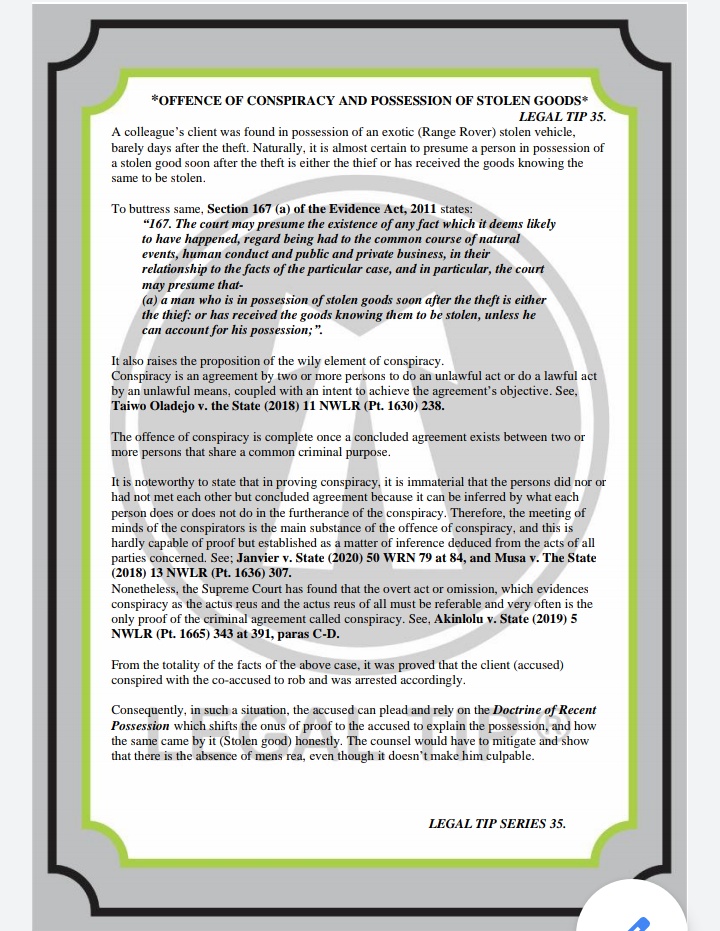A colleague’s client was found in possession of an exotic (Range Rover) stolen vehicle, barely days after the theft. Naturally, it is almost certain to presume a person in possession of a stolen good soon after the theft is either the thief or has received the goods knowing the same to be stolen.
To buttress same, Section 167 (a) of the Evidence Act, 2011 states:
“167. The court may presume the existence of any fact which it deems likely to have happened, regard being had to the common course of natural events, human conduct and public and private business, in their relationship to the facts of the particular case, and in particular, the court may presume that-
(a) a man who is in possession of stolen goods soon after the theft is either the thief: or has received the goods knowing them to be stolen, unless he can account for his possession;”.
It also raises the proposition of the wily element of conspiracy.
Conspiracy is an agreement by two or more persons to do an unlawful act or do a lawful act by an unlawful means, coupled with an intent to achieve the agreement’s objective. See, Taiwo Oladejo v. the State (2018) 11 NWLR (Pt. 1630) 238.
The offence of conspiracy is complete once a concluded agreement exists between two or more persons that share a common criminal purpose.
It is noteworthy to state that in proving conspiracy, it is immaterial that the persons did not or had not met each other but concluded agreement because it can be inferred by what each person does or does not do in the furtherance of the conspiracy. Therefore, the meeting of minds of the conspirators is the main substance of the offence of conspiracy, and this is hardly capable of proof but established as a matter of inference deduced from the acts of all parties concerned. See; Janvier v. State (2020) 50 WRN 79 at 84, and Musa v. The State (2018) 13 NWLR (Pt. 1636) 307.
Nonetheless, the Supreme Court has found that the overt act or omission, which evidences conspiracy as the actus reus and the actus reus of all must be referable and very often is the only proof of the criminal agreement called conspiracy. See, Akinlolu v. State (2019) 5 NWLR (Pt. 1665) 343 at 391, paras C-D.
From the totality of the facts of the above case, it was proved that the client (accused) conspired with the co-accused to rob and was arrested accordingly.
Consequently, in such a situation, the accused can plead and rely on the Doctrine of Recent Possession which shifts the onus of proof to the accused to explain the possession, and how the same came by it (Stolen good) honestly. The counsel would have to mitigate and show that there is the absence of mens rea, even though it doesn’t make him culpable.





191725 813940This blog really is great. How was it created ? 615856
410469 328946Superb weblog here! soon after reading, i decide to buy a sleeping bag ASAP 77645